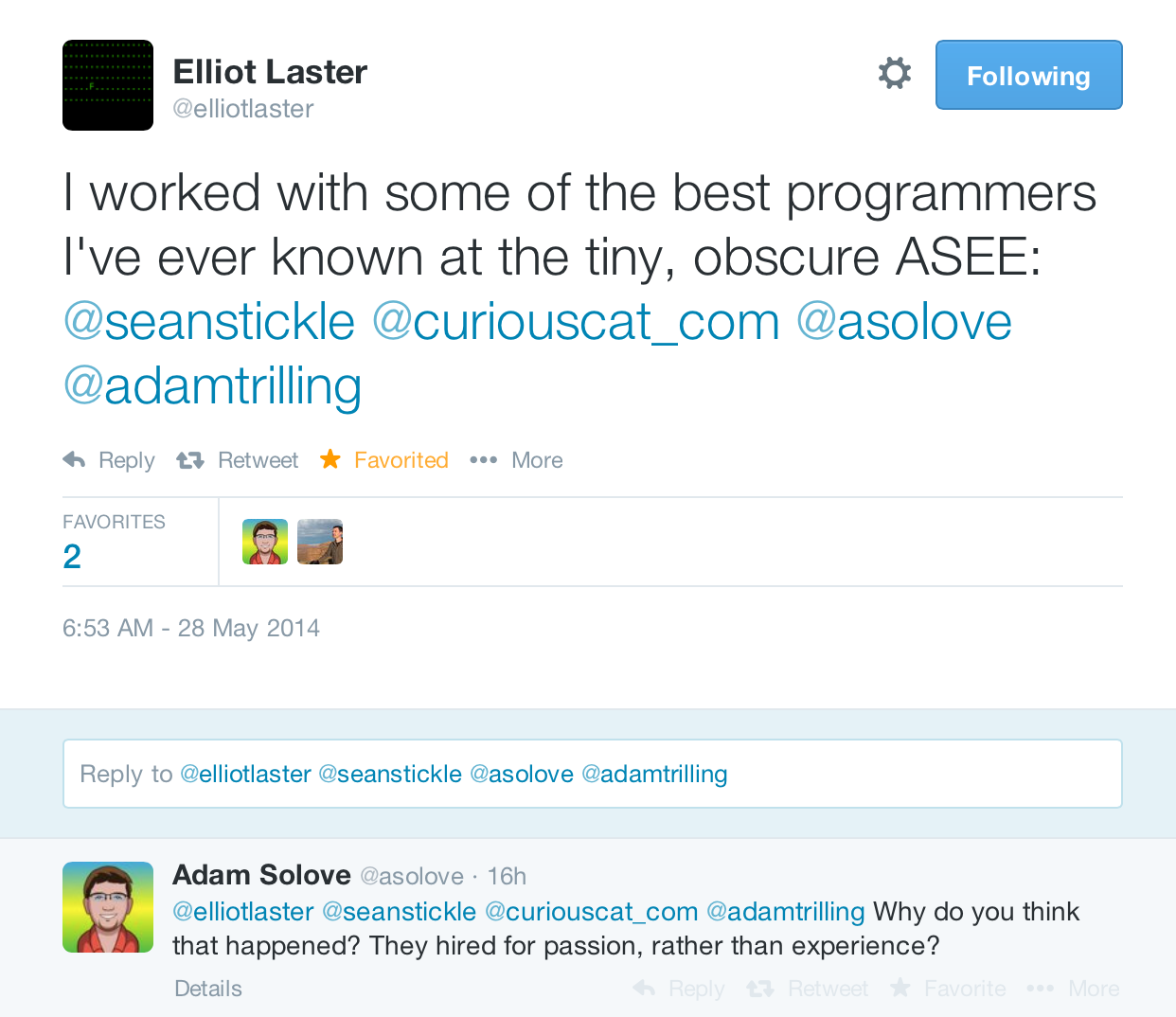ASQ interviewed me, and several other ASQ Influential Voices bloggers for an article published in the current issue of Quality Progress magazine: The Blog Boom [the broken link was removed, it is so disappointing how many organizations can’t manage a web site decently].
A couple of my quotes from the article:
I have been blogging for 10 years, which is more than enough time to convince me it is right for me. Blogging fits my personality—I like short delivery cycles. I don’t like the idea of working on a project that takes a year to reach the audience or customers. With blogging, I can have an idea, and in an hour I can share that with people across the globe. Blogging is similar to agile software development in this way: minimize work-in-progress and deliver working software—or in blogging, text—to users as quickly as possible. Then iterate and extend.
…
One of the benefits I didn’t appreciate before I started was how blogging helps build your knowledge and understanding—in the same way teaching helps you learn the topic you are discussing in a deeper way.I find myself more thoughtful and engaged with ideas because I think about how I can build on those ideas in a blog post. When I start writing, I sometimes realize I don’t actually understand the idea or topic as well as it seemed I did. So I must think about it more to be able to understand it well enough to write about it.
See the whole article to see the rest of my responses and thoughts from Mark Graban, Jennifer Stepniowski, Jimena Calfa and Daniel Zrymiak. The article is available for free, though you do have to register to view that article (registering will also let you view the other articles ASQ has made available to non-members).
Related: Blogging is Good for You (2006) – Your Online Presence (2007) – Your Online Identity (2007) – Curious Cat Blogs (management, investing, travel, engineering, technology…)


